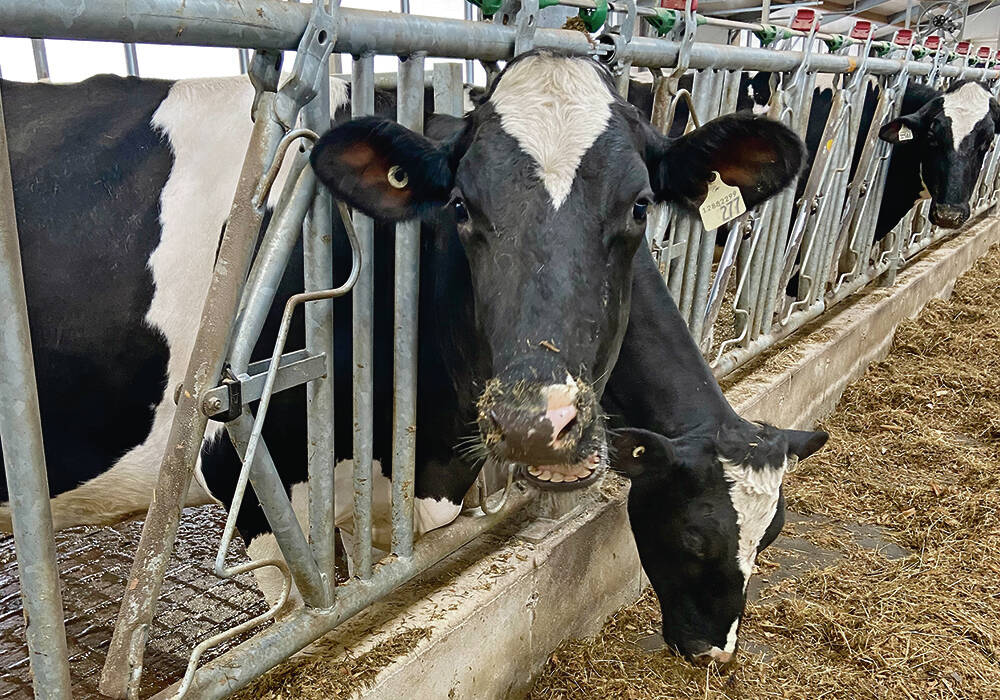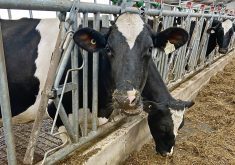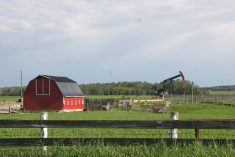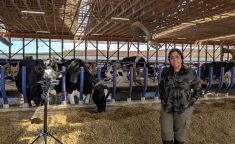“Solar thermal energy just makes so much sense. It’s just a matter of time before we see more and more operations get on board.”
When Standard-area poultry producer Trent Sundgaard considered the alternative energy options available to his poultry operation, he didn’t need to look any further than his last name for a top candidate.
“I’m a strong believer in the sun,” says Sundgaard. “It’s really a no-brainer once you start looking into it. Thermal-solar energy is something available to us every day for free. It’s just a matter of taking advantage.”
Read Also

Alberta Milk opens annual hospital fundraiser
Alberta Milk embarks on holiday season campaign to raise money for Alberta Children’s Hospital Foundation
The cost of putting up a solar thermal wall is comparable to putting up most other types of walls. The heat it captures is free, relatively inexpensive to circulate, and even in Western Canada, thermal-solar energy is surprisingly plentiful throughout the year.
“Even in the dead of winter we often get good sun during the day,” says Sundgaard. “When you look into the technology, you see it doesn’t take much to capture a lot of heat.”
Growing interest
Solar thermal energy is a straightforward concept. Heat is transferred directly from outside to inside air using specially designed panels, windows or solar walls. These can transfer heat to the space directly beneath the envelope, or feed into a ventilation system. Heat transfer and distribution can be aided by fans in both types of systems.
Today, most heating systems of commercial scale use solar panels, which are increasingly viewed as the most straightforward and best “bang for the buck” option. Solar walls are made of corrugated steel panels and come in a variety of col-ours – black is the most common and most efficient. They can be installed during new construction or retrofitted. The walls are perforated with holes calibrated to a size designed to meet the heating and ventilation needs of the building.
Solar walls are becoming more common in everything from hospitals and schools to residences. They have yet to catch on in agriculture, but more producers such as Sundgaard are taking a closer look and some are adopting the technology.
A solar wall designed for a 400-foot-long barn might cost around $35,000 to $50,000. But depending on heat costs, that could save $10,000 to $20,000 per year. Once the install is paid off, the operation is set up to get essentially free heating for many years, with most thermal-solar walls good for the life of a building.
Healthy return on investment
Sundgaard recently installed a 400×8-foot solar thermal wall on his main poultry barn, becoming one of the first livestock producers in Alberta to do so.
He was also able to take advantage of a federal rebate program to get about one-third of his investment cost paid back right away.
Going a step further, he has also teamed up with advisers and engineers from the Alberta Agriculture and Rural Development (ARD) Stewardship Division, to use his experience over 12 months as a case study to provide data that will help other agricultural operations to better understand their potential to benefit from thermal-solar energy.
ARD project manager Jason Price agrees the time has arrived for more operations to give thermal-solar energy a serious look.
Alternative energy as a whole is getting more attention as new innovations provide producers with lower-cost options to boost energy efficiency. Thermal-solar power, in large part due to its simplicity and relatively low investment cost, is one of the most attractive options.
Interest in alternative technology ebbs and flows with prices for conventional energy sources such as natural gas, says Price. A couple years back, with high natural gas prices, there was a clear spike in interest, which has now subsided a bit with those prices currently much lower.
The key, he says, is to think long term. “Stability itself can be a big advantage during periods of fluctuating cost. With conventional energy prices low, the savings from solar thermal to your monthly power bill won’t be dramatic, but they’ll get bigger when prices inevitably go back up.
“There’s startup cost to installing a solar thermal wall, just like there is for any other type of building material. After that, from the perspective of your monthly power bill, you’re effectively locked in at a low rate for the life of your building.”
Positive signs
Price and others on the project team have worked with Sundgaard to outfit his facility with sensors to collect key data such as heat units collected and transfer efficiency for space heating. The data will give producers a better idea of month-to-month savings and payback period.
Falconer Ben Campbell, of Black Diamond, Alta., trains an immature red-tailed hawk to hunt. Campbell got the hawk from a raptor rehabilitation centre near Leduc, Alta., after it was injured last year. He teaches the hawk by training it to fly and attack rabbit meat that he swings through the air. Campbell intends to release the bird in late spring or summer. He uses his family’s cattle pastures to train the hawk. “I don’t use beef to train him,” he said smiling. “I don’t want him to get used to that.”
– Photos by Wendy Dudley
Released by the
handlers, the red-tailed hawk flies directly to Ben Campbell who is swinging a piece of rabbit meat while he calls in the hawk.














